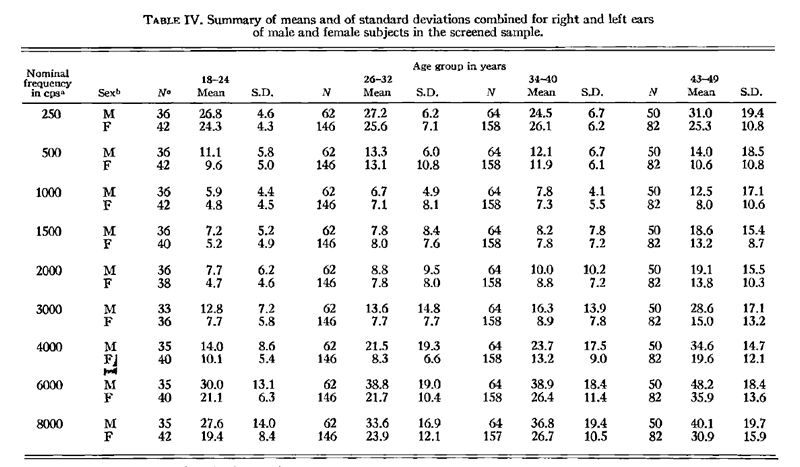August 06, 2006
Neuroscience in the service of sexual stereotypes
 It's recently fashionable for books and articles to enlist neuroscience in support of the view that men and women are essentially and unavoidably different, not just in size and shape, but also in just about every aspect of the way they see, hear, feel, talk, listen and think. These works tend to confirm our culture's current stereotypes and prejudices, and the science they cite is often overinterpreted, and sometimes seems simply to have been made up. I recently discussed an example from Leonard Sax's book Why Gender Matters ("Are men emotional children?", 6/24/2006), which David Brooks has used to support an argument for single-sex education. The latest example of this genre, released August 1, is Louann Brizendine's book "The Female Brain".
It's recently fashionable for books and articles to enlist neuroscience in support of the view that men and women are essentially and unavoidably different, not just in size and shape, but also in just about every aspect of the way they see, hear, feel, talk, listen and think. These works tend to confirm our culture's current stereotypes and prejudices, and the science they cite is often overinterpreted, and sometimes seems simply to have been made up. I recently discussed an example from Leonard Sax's book Why Gender Matters ("Are men emotional children?", 6/24/2006), which David Brooks has used to support an argument for single-sex education. The latest example of this genre, released August 1, is Louann Brizendine's book "The Female Brain".
Here's what its jacket blurb says:
Every brain begins as a female brain. It only becomes male eight weeks after conception, when excess testosterone shrinks the communications center, reduces the hearing cortex, and makes the part of the brain that processes sex twice as large.
Louann Brizendine, M.D. is a pioneering neuropsychiatrist who brings together the latest findings to show how the unique structure of the female brain determines how women think, what they value, how they communicate, and who they’ll love. Brizendine reveals the neurological explanations behind why
• A woman uses about 20,000 words per day while a man uses about 7,000
• A woman remembers fights that a man insists never happened
• A teen girl is so obsessed with her looks and talking on the phone
• Thoughts about sex enter a woman’s brain once every couple of days but enter a man’s brain about once every minute
• A woman knows what people are feeling, while a man can’t spot an emotion unless somebody cries or threatens bodily harm
• A woman over 50 is more likely to initiate divorce than a man
Women will come away from this book knowing that they have a lean, mean communicating machine. Men will develop a serious case of brain envy.
I looked through the book to try to find the research behind the 20,000-vs.-7,000-words-per-day claim, and I looked on the web as well, but I haven't been able to find it yet. Brizendine also claims that women speak twice as fast as men (250 words per minute vs. 125 words per minute). These are striking assertions from an eminent scientist, with big quantitative differences confirming the standard stereotype about those gabby women and us laconic guys. The only trouble is, I'm pretty sure that both claims are false.
With respect to the speech rate claim, I've just run a script on a corpus of 5,202 transcribed and time-aligned telephone conversations, involving native speakers of American English with a wide variety of ages, regions and backgrounds. The average speech rate for the males was 174.3 wpm, and the average speech rate for the females 172.6 wpm. I assume that Brizendine didn't just concoct her figures about male vs. female speech rates out of thin air -- she must have gotten them from a study that someone did somewhere, sometime, or at least from some other author plugging another work in the flourishing genre of pop gender studies -- but let's say, at least, that it ain't necessarily so. I'll post something more about Brizendine's striking speaking-rate and words-per-day claims as soon as I can figure out what evidence she based them on. [More on female and male speaking rates is here, and more on the number of words men and women typically speak per day is here.]
There certainly are psychological and neurological differences between men and women, sometimes big ones. But even when they aren't promoting their ideas on the basis of "facts" that are apparently false, authors like Sax and Brizendine use a set of rhetorical tricks that tend to make sex differences seem bigger and more consequential than they really are. You can do it too, if you want -- just choose phenomena that emphasize differences, leaving out the ones where the sexes are more similar; pick studies that find stereotypic differences, leaving out the ones whose results disagree; and in all cases, talk and write as if (even relatively small) differences in group averages were essential characteristics of every member of each group.
There's a great example of that last trick in the following passage from a lecture by Dr. Brizentine called the "The Teen Girl Brain", available in video form on her UCSF web site, :
We have a lot more sensitivity and emotional awareness than the typical male,
and- and- and hugely better ability to read facial expressions,
um and also tone of voice.
At birth, baby girls are able to hear a lot more um
um in a lot larger range
uh in the human voice range of frequency
in the human voice
than boys are able to. So ((you)) remember that story that I told you about "Don't touch"?
Sometimes a- a mother will be yelling at their boy
or at least- sh- how many mothers in the room have had to like scream at your boys to stop doing something?
He may not have heard you! I mean, real- he may not just be being bad, or whatever -- he may just not literally have heard you when your voice was a little bit quieter.
So he may just *need* a louder voice.
Um and there are more talking and listening circuits in the female brain.
Let's zero in on the business about differences in hearing sensitivity. In her book, Brizendine puts it like this (p. 17): "Just as bats can hear sounds that even cats and dogs cannot, girls can hear a broader range of sound frequency and tones in the human voice than can boys." If we take this literally, it's nonsense. In the first place, it's simply false that girls' frequency range compares to boys' like bats to dogs, and as far as I can tell, none of the sources that she cites even suggest anything of the kind. In the second place, all the communicatively-relevant information in speech is well within the frequency range even of normal adults, who have started to lose high-frequency hearing compared to children of both sexes. But let's give Brizendine the benefit of the doubt, and interpret her as talking about a sex difference in auditory sensitivity across the shared frequency range of normal hearing.
This sex difference really exists. It's been known for half a century that girls and women have more sensitive hearing, on average, than boys and men. But those two little words "on average" are crucial. If you pick a man and a women (or a boy and a girl) at random, the chances are about 6 in 10 that the girl's hearing will be more sensitive -- but about 4 in 10 that the boy's hearing will be more sensitive. Not only that, but the expected value of the sensitivity difference is extremely small: at 1,000 Hz, our randomly-selected girl's threshold will be about 1.1 DB lower than our randomly-selected boy's threshold; at 1,500 Hz, the difference will be about 2 DB. By comparison the JND ("just noticeable difference") for soft sounds is about 1 DB.
So if boys are really less attentive to their mothers than girls are, the difference is not very likely to be due to differences in hearing sensitivity. (And given how cavalier Dr. Brizendine is about the audiology, I'm not prepared to trust her generalizations about gendered behavior without checking and evaluating the references.) This is exactly the same type of statistical sleight-of-hand that Leonard Sax used to argue that men fail to mature emotionally in the way that women do ("Are men emotional children", 6/24/2006). Sax started from a small (and statistically marginal) experiment that claimed a small difference in average rates of change with age, where individual differences were very large compared to the claimed group difference, and blew it up into a claim about all individual men and all individual women. Brizendine has taken a well-established but small difference in average auditory sensitivity, where the between-group difference in means is about half a standard deviation, and turned it into a claim about the essential nature of all individual human males and females.
Unless you're interested in the details, you can tune out now -- but for the record, here are the facts.
The standard early reference on sex differences in auditory sensitivity is John F. Corso, " Age and Sex Differences in Pure-Tone Thresholds", The Journal of the Acoustical Society of America, 31(4), pp. 498-507 (1959). The more recent studies are consistent with his results, and he gives a lot of detailed numbers, so I'll rely on the data in his paper. Corso measured how loud tones of different frequencies had to be for subjects to hear them, across a range of frequencies from 250 Hz to 8,000 Hz. He tested a large number of males and females of different ages from the students, faculty and staff at Penn State.
Corso didn't examine infants and children -- his lower age bracket is 18-24. It's hard to test the hearing of babies and toddlers -- it's generally done using techniques like "auditory brainstem response" (ABR), "auditory evoked potentials" (AEPs), "spontaneous otoacoustic emissions" (SOAEs) and "click-evoked otoacoustic emissions" (CEOAEs) For a survey, see Dennis McFadden, "Masculinization Effects in the Auditory System", Archives of Sexual Behavior, Vol. 31, No. 1, February 2002.. None of these techniques makes it easy to quantify differences in hearing sensitivity in a way that would let us draw conclusions about how likely a one- or two-year-old would be to respond to a sound of a given intensity. I haven't been able to find any studies suggesting that the sex difference in auditory sensitivity is greater for toddlers than it is for college students, so I'll take Corso's 18-24-year-old group as representative of the likely differences for children. After eliminating people who had a history of excessive noise exposure, or other indications of possible environmental hearing loss, Corso had 62 men and 146 women in that age bracket.
Here's his summary table:

Here's a plot showing the distribution of thresholds expected on the basis of Corso's parameters for sensitivity to tones at 1,000 Hz in the 18-24-year-old age range, assuming normal distributions:

In fact there is evidence in his paper that the distributions are somewhat skewed towards the higher-threshold end; but this will not change the degree of overlap much.
[More here.]
Posted by Mark Liberman at August 6, 2006 07:33 AM